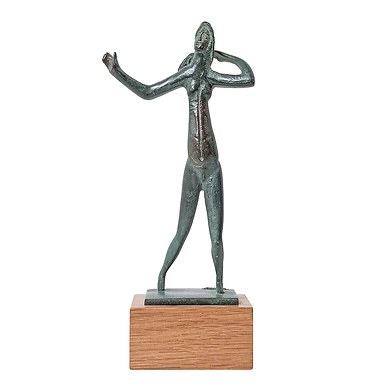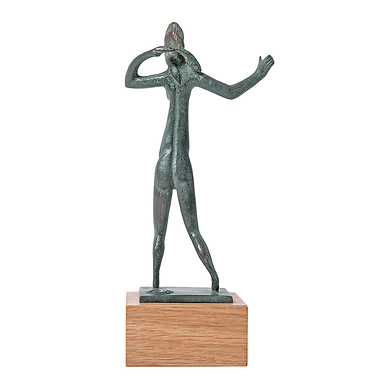Sculpture Hermes
RG003554
Gallo-Roman Art
Reign of Augustus (?)
This bust was found in 1970 during the excavations of a Roman area in Fréjus (Le Clos de la Tour, Insula I), near a big edifice with a peristyle and exhedra. It stands out among the relatively abundant and usually mediocre series of double Hermes produced by Hellenistic...
Read more
Gallo-Roman Art
Reign of Augustus (?)
This bust was found in 1970 during the excavations of a Roman area in Fréjus (Le Clos de la Tour, Insula I), near a big edifice with a peristyle and exhedra. It stands out among the relatively abundant and usually mediocre series of double Hermes produced by Hellenistic and Roman sculptors. Here, the artist has skilfully combined rustic divinities crowned with flowers by placing them opposite each other. On one side stands a young Faun with goat-like attributes and features which emphasize without extravagance its sprightly temperament and mischievous spirit; and on the other side, a bearded Hermes or Dionysos, with an Olympian majesty and an "unfathomable" expression underlined by the slight smile of an archaic kouros.
The Hermes-Pan dyad can be recognized in this severe yet playful group, two pastoral gods associated with Terminus and Faunus in Latin countries, and barely distinguishable from Priapus and Sylvanus. The Homeric poem to Pan (XVII) and Herodotus (II, 145-146) refer to this goat-footed figure as the son of Hermes. This close relationship and similar pastoral functions are the reason for uniting these two principal Arcadian gods on the same pillar. However, the considerable confusion that has persisted since Late Antiquity over the close similarity between Dionysos and Hermes, and the assimilation of the very widespread theme of the Satyr, assistant of Bacchus, are grounds for some uncertainty. If the figure is considered to be Hermes, it is because Dionysos is not wearing the customary the ivy crown that distinguishes him in the procession of long-bearded gods. In any event, the Latin taste for "Janus" figures, a deliberately archaic style, and the reintroduction of crossroads festivities (compitales) by Augustus, seem to confirm the choice of this particular association and the fine style of the sculpture.
Imported through colonization to Fréjus, Forum Julii, one of the gates of Gaul, this work of art may have decorated the garden of a rich villa urbana, unless it
belonged to a public edifice, palaestra or market. In many ways, it is the heir of the purest Hellenistic tradition, and all it needs, in fact, is a Greek signature.
Close
Login to see prices
Sold by GrandPalaisRmn








